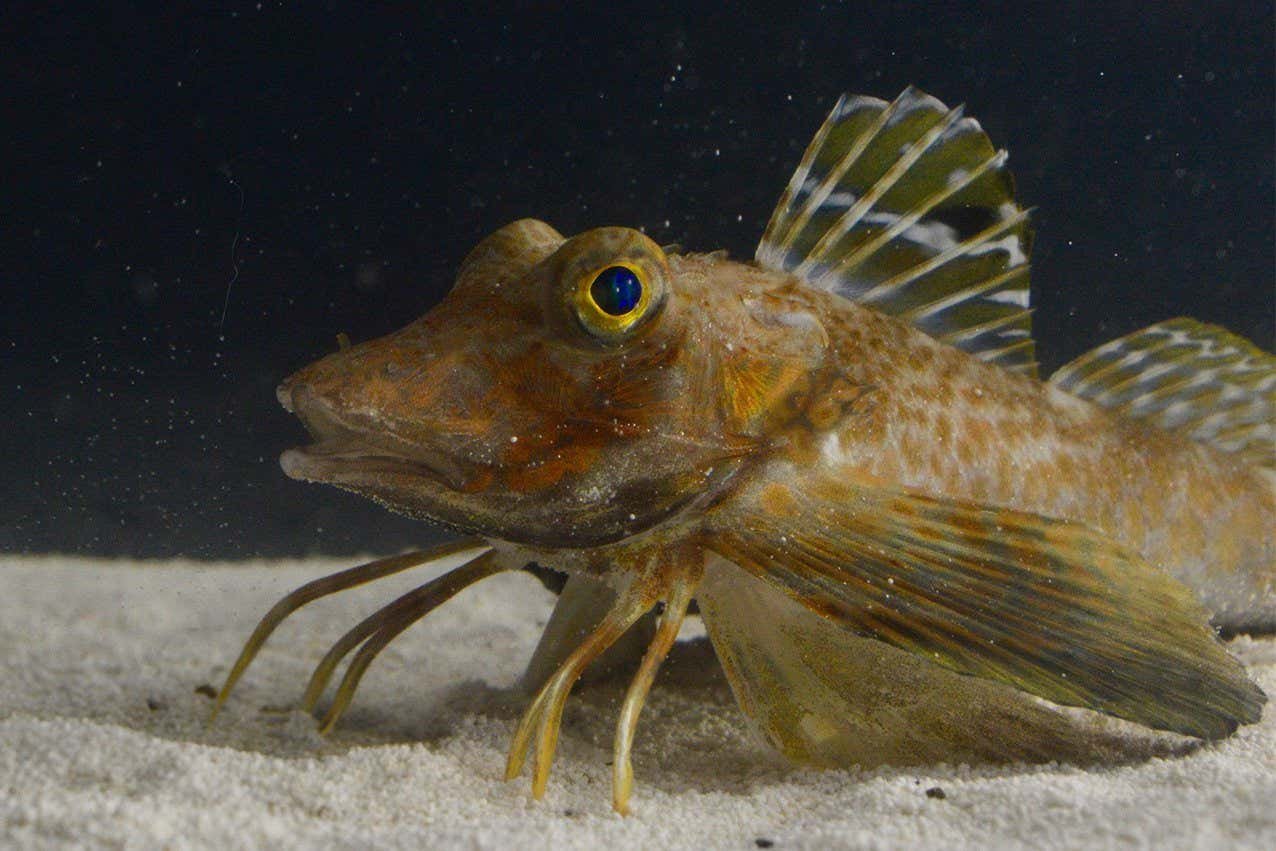
The northern sea robin uses its legs to find food in the seabed
Anik Grearson
A striking fish that lives at the bottom of the Atlantic Ocean has evolved legs – but not just for walking. These appendages are a novel sensory organ like a tongue, which they use to find prey buried in the seabed.
Northern sea robins (Prionotus carolinus) have three legs on each side of their body, protruding from the base of their pectoral fins. The legs are derived from structures within the pectoral fins, called fin rays.
On a research trip to Woods Hole, Massachusetts, Nicholas Bellono at Harvard University and his colleagues heard stories of the hunting prowess of the sea robins and decided to bring several live specimens back to their lab.
The team wanted to find out if the fish were as good at finding prey as their reputation suggested. “To our surprise, they were very, very good at it and could even uncover capsules filled with ground-up and filtered mussel extract, and single amino acids,” says Bellono.
The researchers then collected more of the fish, only to discover that the second batch were good at walking but not at sensing prey buried in the sand.
“This time the new sea robins didn’t find anything, despite readily eating prey on the surface,” says Bellono. “We thought we were maybe doing something wrong, but it turned out that we accidentally got a different species.”
The team had inadvertently collected the striped sea robin (Prionotus evolans), which walks but specialises in hunting unburied prey.
“When we looked at the digging versus non-digging animals, the legs were so obviously different and the sensory papillae on the digging legs were even clear by eye,” says Bellono.
These papillae are bumps containing taste receptors and touch-sensitive neurons, similar to the papillae made up of taste buds on the human tongue.
Various other fish have evolved modified pectoral and pelvic fins that allow them to walk or perch, says team member Amy Herbert at Stanford University, California. “However, a unique feature about the sea robin is that while other fish typically use the entire pectoral or pelvic fin for this purpose, the legs of the sea robin can move independently – and quite quickly – making them particularly adept at both walking and digging,” she says.
The team also looked into the genes that drove the evolution of the sea robin’s unique legs, and found that their development is controlled by an ancient regulatory gene called tbx3a.
“It’s normally expressed in a particular local domain of fin and limb buds in a whole range of animals from fish to mammals,” says team member David Kingsley, also at Stanford University. “This is an excellent example of making new body parts by modifying old, shared tools.”
Topics:

Felecia Phillips Ollie DD (h.c.) is the inspiring leader and founder of The Equality Network LLC (TEN). With a background in coaching, travel, and a career in news, Felecia brings a unique perspective to promoting diversity and inclusion. Holding a Bachelor’s Degree in English/Communications, she is passionate about creating a more inclusive future. From graduating from Mississippi Valley State University to leading initiatives like the Washington State Department of Ecology’s Equal Employment Opportunity Program, Felecia is dedicated to making a positive impact. Join her journey on our blog as she shares insights and leads the charge for equity through The Equality Network.




